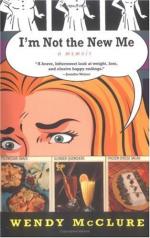Delacroix’s genius found expression in many small pictures, all of them characterized by a gem-like coloration (which is more than mere color, however, for in it lies the secret of a powerful and direct expression of sentiment) and by a vivid realization of movement. Proud by nature, delicate in health, his life was far from happy; he never ceased to feel the sting of adverse criticism. “For more than thirty years I have been given over to the wild beasts,” he said once. He had warm friends, who have left many records of his sweetness of disposition when the outer barrier of haughty reserve was broken through; but they were few in number. He never married; painting, he said, was his only mistress, and his passion for his art is felt through all his work. His death occurred at Champrosay near Paris, where he had a modest country house, on August 13, 1863; and four years later, January 14, 1867, his great adversary, Ingres, followed him.
CY AND I.
BY EUGENE FIELD.
As I went moseyin’ down th’
street,
My Denver friend I chanced t’ meet.
“Hello!”
says I,
“Where have
you been so long a time
That we have missed your soothin’
rhyme?”
“New York,”
says Cy.
“Gee whiz!”
says I.
“You must have seen some wonders
down
In that historic, splendid town;”
And then says
I:
“For bridges, parks, and crowded
streets
There is no other place that beats
New York,”
says I.
“Correct!”
says Cy.
“The town is mighty big, but then
It isn’t in it with its men,
Is it?”
says I.
“And tell me, Cyrus, if you can,
Who is its biggest, brainiest man?”
“Dana!”
says Cy.
“You bet!”
says I.
“He’s big of heart and big
of brain,
And he’s been good unto us twain”—
Choked up, says
I.
“I love him, and I pray God give
Him many, many years to live!
Eh, Cy?”
says I.
“Amen!”
says Cy.
A YOUNG HERO
PERSONAL REMINISCENCES OF COLONEL E.E. ELLSWORTH.
BY JOHN HAY,
Author, with John G. Nicolay, of “Abraham Lincoln: a History.”
[Illustration: HENRY H. MILLER, A MEMBER OF THE ORIGINAL COMPANY OF ELLSWORTH ZOUAVES.
From a photograph loaned by Mr. Miller and taken in
1861 by Colonel
E.L. Brand, at that time commanding the company.]




